Liquid Immersed Thermal Management Solution™ (LITMS)
Inside every LIQUILEDS light bulb is the special fluid solution, the core ingredient we use to improve the quality of using LEDs for lighting applications.
Part of our Liquid Immersed Thermal Management SolutionTM (LITMS) technology, the vacuum-sealed liquid maximizes heat dissipation, drastically enhancing the efficiency of LED thermal management. Most conventional LED-based lights comprise a variety of designs that radiate excessive heat, reduce lighting intensity, and degrade the quality of lumen output over time. The problem of thermal energy build-up and the directional limitation of light remain the key challenges for many of today's LED manufacturers.
To address these challenges, our engineers integrate liquid as the source material into the building of our core technology LITMS.
So, what makes our products unique - and such a better choice?
The LITMS technology provide LIQUILEDS bulbs the capability of scattering light in multi-directions, while dramatically improving heat dissipation. And because our bulbs produce non-toxic light and are compliant with RoHS safety regulations, you can rest assured the safety of incorporating our innovation into your next LED project.
|
| |
| Advantages & Benefits |
- Superior Heat Dissipation LITMS Technology Leads to Longer Life and Reduced Light Decay:
LIQUILEDS’ LITMS is superior in dissipating heat compared to others. Most conventional LED bulbs have designs which do not optimize heat dissipation causing shorter lifespan, reduced light transmission and faster degradation of lumen output over time.
Our liquid-cooled bulbs utilize both liquid and metal conductors inside the bulb to achieve optimal heat dissipation. Both the LED module and metal conductors are immersed in liquid to quickly remove heat from hotspots and efficiently dissipates it from the entire glass surface. LITMS avoids user-exposed heat sinks which may be inefficient, dangerously hot and costly.
- Use of Liquid Improves Efficiency of Light Transmission and Diffusion:
The harmless liquid in Liquidleds’ bulbs serves to uniformly scatter light with beam angle greater than 260 degrees. Moreover, the liquid is 40-50% more efficient than vacuum or air in transmitting light creating a brighter, wider angle of uniform illumination. In comparison to LITMS, other LED bulbs are not as efficient at transmitting lumens because the air in the bulb and coated glass cause refraction issues.
- All Components are Environmentally-Friendly and Recyclable:
Each and every element used in LIQUILEDS’ light bulbs can be recycled. The liquid is a food-grade mineral oil which is harmless to the environment and people.
|
| |
| Details on Liquid-Cooling Methodology |
- Liquid-Cool Solution.
By immersing the hot LED and metal conductors in liquid, the LITMS liquid transfers heat away from the LED module to the surface of the glass. Similar to water-cooled nuclear plants, LITMS uses liquid convection to efficiently remove heat from hotspots.
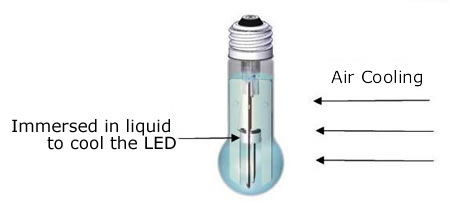
Thermal Conduction = A x K x (△T/△D)
Thermal Absorption = A x Cp x (△T/△t)
o Metal – thermal conductivity K is large and has low heat capacity (Cp); as a result, metal generally do not retain thermal energy.
o Liquid – It has a high heat capacity (Cp); as a result, liquids generally have high heat absorption capacity
- Localized Hotspots.
Much of the LED heat generated is localized in small hotspots. Surrounding these small hotspots by liquid serves as an efficient medium for dissipating the heat.
- Dissipate Heat from Glass Surface.
The liquid cools by its contact with the glass cooled by the air on all side. In comparison, other conventional LED bulb designs a heat sink near the base of the bulb and attempts to dissipate the heat only from the base.
|
| |
| Details on Effective Light Scatter using LITMS |
- Conventional LED Uses Coating for Light Scatter.
Most conventional LED bulbs have a “frosted” appearance because of the white coating applied to the glass to produce diffuse, uniform light. Glass coating reflect light multiple times inside the bulb.
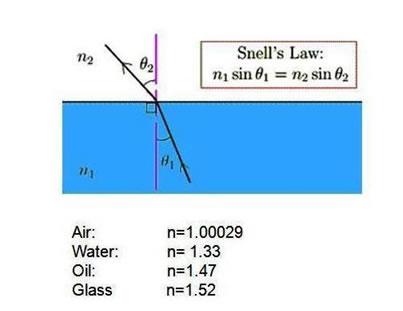
- Liquid is a More Efficient Medium.
LIQUILEDS’ LITMS uses liquid as the medium for light scatter and results in less reflection. Liquid is more effective than air, vacuum or glass coating at scattering light.
o Incident area n1 where medium is liquid; Refraction area n2 where medium is air
o Where n1>n2 and Refraction angle = θ2>θ1
o Liquid would scatter the LED’s concentrated light
- According to Snell’s law, the thickness of a glass bulb is so thin that refraction can be ignored.
|
| |
| Details on Efficiency Gain of Light Transmission using LITMS |
- Reduced Intensity Due to Reflection.
Repeated reflection of light inside the bulb reduces its intensity. Total lamp lumen efficiency is around 30%.
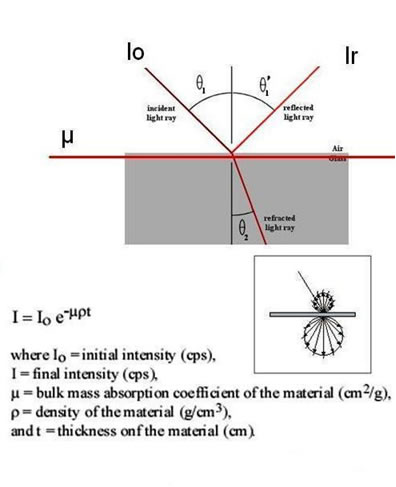
- Lambert’s Law.
According to Bouguer-Lambert Law, the absorption coefficient μ for a white coated glass is large where the final intensity (I) is much less than the initial intensity (Io)
- Liquid Improves Lumen Transmission.
Liquid as medium for light diffusion or transmission increases total lumen efficiency to 70-80%.
|
| |
| AC LED Lighting |
| Advantages & Benefits |
- High Power Factor Increases Efficiency, Reliability and Cost Saving:
Unlike most LED bulbs, LIQUILEDS’ AC LED bulbs have a high power factor because of no need for a power converter. High power factor ensures power saving and cost savings. Additionally, no power converter eliminates a common point of failure for LED bulbs.
- Simple Design Ensures Reliability and Minimizes Cost:
Unlike most LED bulbs, LIQUILEDS’ bulbs do not require a CCD (Constant Current Driver), power converter or exposed heat sink. As a result, a relatively simple design increases reliability and minimizes the risk of component failure. Moreover, LIQUILEDS’ bulbs also have all the advantage of traditional vacuum bulbs. The vacuum seal ensures that the bulbs are durable in outdoor and adverse conditions.
- Excellent On-Off Durability:
Unlike DC LED lighting, the lifespan of AC LED light is not harmed by turning the light on and off. Therefore, LIQUILEDS’ AC LED light bulbs can be use in general lighting applications requiring constant flickering or on-off cycles.
|
| |
| |
| Principles of AC LED |
- Two sets of integrated LED to be operated alternately by positive and negative AC sin voltage to activate periodical LED light.
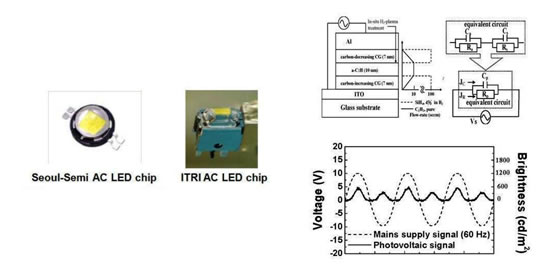
- LED chips can directly use 110Vac or 220Vac outlets thus complementing the public AC electrical distribution system.
|
| |
| The Advantages of Glass Vacuum Bulbs |
- 100 Years of Edison Glass Bulbs.
Mature glass workmanship and stable manufacturing.
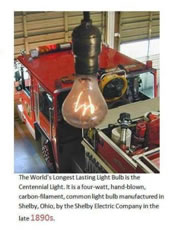
- Vacuum Inside.
Creating a vacuum without oxygen in the bulb stabilizes physical and chemical characteristics inside the bulb.
- Automated Glass Manufacturing.
Automated machine ensures repeatable quality and low cost.
- Glass is Natural and Climate Resistant.
Glass bulbs’ resistance against acid, alkali, salt, steam and humidity makes them extremely durable against the elements. Moreover, glass is recyclable and environmentally friendly.
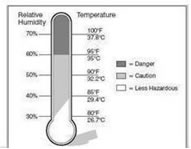
|
| |
| Low Junction Temperature |
- Reduced Lumen Decay.
With a low junction temperature of less than 90 degrees C, Liquidleds’ LED light will still emit 70% of original lumen after 30,000 hours of operation (approx. 10 years).
- Glass Surface Can be Touched.
Glass surface of bulb diffuses heat from the liquid.
o Q = h air x A x (Ts-Ta)
Glass surface A is designed for thermal diffusion. Since A has a sufficiently large surface area and (Ts-Ta) will be small, the low rise in temperature will make the glass touchable.
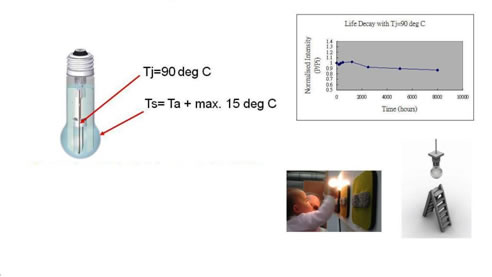
|
| |